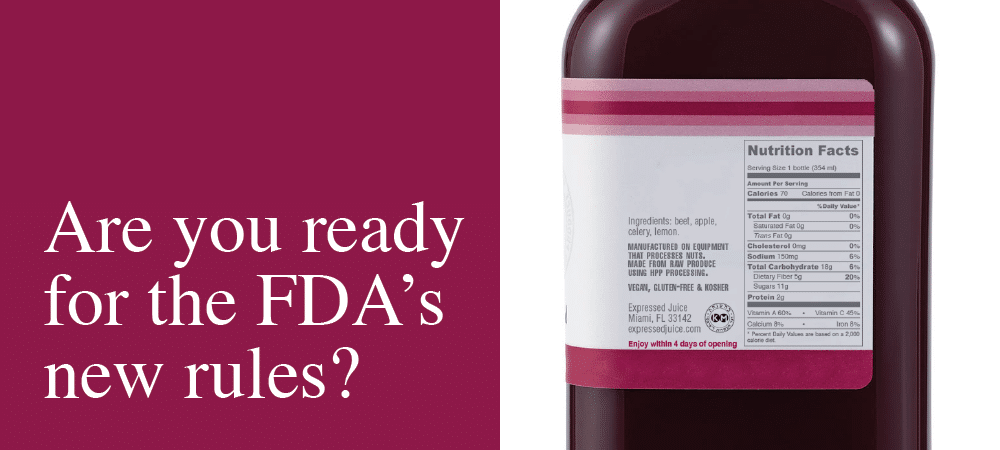The more things change, the more they stay the same. The FDA has been part of the movement to proper nutritional knowledge through labeling since the 1990s, including an evolution toward trans fat awareness since its 2006 ruling requiring disclosure of trans fat content. Food labels are being revamped and science is leading the way with more advanced findings. Whole nutrition, obesity, and chronic disease can be ameliorated through proper nutrition. As part of the proposed updates by the FDA, serving sizes would be updated to reflect the amounts of food people are actually eating and drinking now, as opposed to what they should be eating. In addition, the format of the label would be refreshed, with key elements such as calories, serving sizes, and percent daily value becoming more prominent. The FDA is proposing a compliance date of two years after the effective date for any final rule resulting from these proposed changes.
Three new rules:
- Nutritional findings
- Serving sizes
- Design changes
Revamps will focus on new nutritional findings, realistic serving sizes, and overall design.
Nutritional findings
For some healthy foods, the manufacturer may add sugar to make them more palatable. Think of granola bars and muesli, which can have added sugars and fat to make them an enticing breakfast choice. Additional information is the updated daily values. New labels will ensure that people are aware of what exactly a product contains and how it affects their daily nutrition. Vitamin D and potassium are the new stars of the show, alongside mainstays such as iron and calcium. Vitamins A and C are no longer required to be on the label. Types of fat are more important than amounts, so trans, saturated, and total fat will be required, while calories from fat will not be.
Serving sizes and packaging
Many visitors to America remark on how hearty our portions are compared to other countries. These heftier portions per sitting will now be reflected on food labels. They will no longer report what we should eat, but what is typically consumed in one sitting. Changes will also be reflected in the packaging. Package size can be a determining factor in how much people eat and drink. Both a 12 ounce and 20 ounce container will be considered one serving under the new guidelines. Most people drink the full contents of a bottle in one meal. The consumer will be responsible for larger or smaller servings based on the nutritional information provided.
Refreshed design
The changes to the labels are more about rearranging information than razing the old system. Serving size will be placed on the first line, most likely as a reminder of what a serving size should look like. Calories will now be on the second line and prominently displayed. Percentages of updated daily values will now be on the right rather than on the left. The new elements will be displayed in larger type, and added sugar, potassium and vitamin D values, and a new footnote are yet to be determined.
Takeaway
Visit FDA for more detailed information and infographics. The FDA is aware of how monumental these changes will be and will give a two-year implementation date.
Are you looking for an award-winning food packaging design agency to help you with your new product line? We’d love to help you! Contact us today.
For more resources, check out our food packaging design guide.



